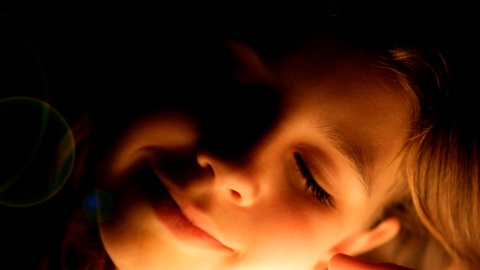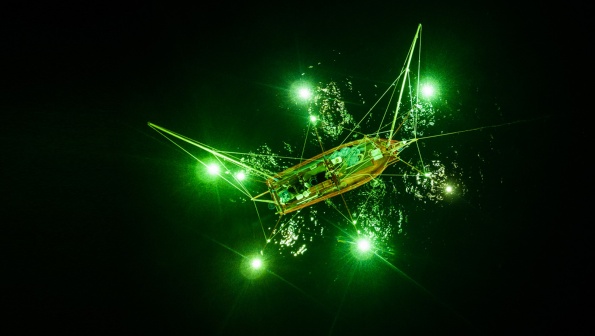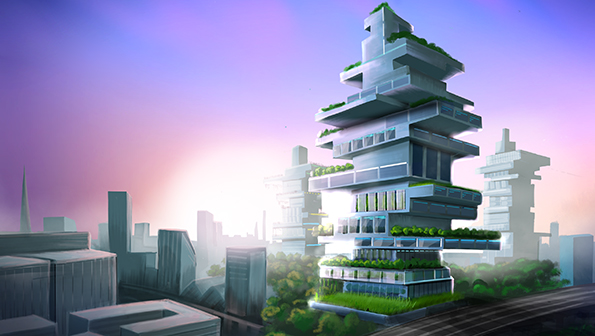
Light is one of the most important preconditions for life on our planet. Plants use sunlight to create life-giving oxygen. The rising and setting of the sun meters the tempo of man's heartbeat. Light influences our moods and regulates important bodily functions, when we sleep, when we wake up. We use artificial light to get us through the dark hours of the day.
Illumination has become an ordinary part of our everyday experience, as have high-tech lighting sources. Nevertheless, artificial light is often only barely affordable for people in underdeveloped countries, where it is also often associated with damaging environmental impacts linked to the use of traditional lighting sources such as kerosene lamps. But modern lighting technologies are making headway here as well.
One day full of LED
Follow us through a day full of LED technology - the light for life
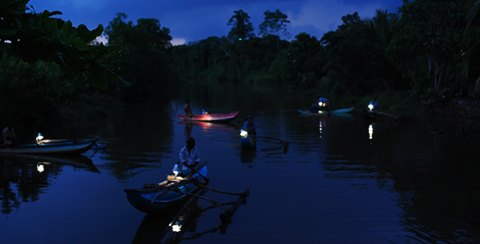
The night is pitch black. The stars flicker through the mangrove forests of Sri Lanka. In this swampy labyrinth on the Indian Ocean a lone shrimp fisherman is at work. When his day begins, the rest of the island's population is still fast asleep. Perched in his boat, each night the fisherman trawls through the murky swamps on the lookout for his tiny aquatic quarry. He repeatedly dips a small light into the water to attract the shrimp, which he then collects in his net.
At first glance his routine looks a lot like some traditional island ritual, but the lamp he's using actually contains a highly innovative technology: Light-emitting diodes, also known as LEDs. Thanks to the water-tight LED lamp, tonight the fisherman pulls hundreds of shrimp from his net.
This highly modern lighting technology, which is also extremely environmentally friendly, is gradually replacing the kerosene lamps Sri Lanka's fisherman have used in the past and which are still in widespread use throughout this island nation.
And the old-fashioned lamps consume a lot of fuel: Each year the island's 85,000 inland fishermen burn an estimated 30 million liters of kerosene – enough to fill up the fuel tanks of about one hundred Airbus A380s – and emit a total of 75,000 tons of carbon dioxide into the atmosphere.
Thanks to a water-tight and inexpensive LED lamp, today the shrimp fishermen can switch to an innovative lighting technology while protecting the sensitive ecosystem from kerosene spills and reducing CO2 emissions. The lamp was developed as a part of the initiative "LED Light for You".
As the day begins

As the fisherman's working day ends at sunrise, only a few hours later a businessman's day begins in Europe.
The LED light of the alarm clock on his bedside table slowly illuminates his bedroom, gently waking him from a deep sleep. LED lamps automatically light up the hallway as he enters.
The system automatically turns on the light, and only when it's needed. Another benefit of the semiconductor-based lighting solution: The light goes on immediately, without delay.
On the way to work
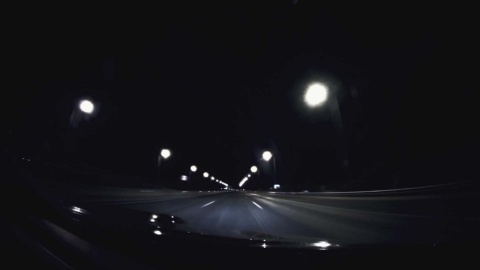
In the shadowy light of the sunrise the businessman sets off for work, his journey safeguarded by LED headlights in his car, which evenly illuminate the street. Bright street lights make sure the businessman finds an easy path through the morning rush-hour traffic.
As soon as he reaches the parking lot, motion detectors are activated and the lot's lights turn on automatically. The parking information system's display lights show him vacant parking spots in green and occupied ones in red, making it easy to quickly find a space.
As soon as the businessman enters the office building the parking lot lights go out again. The ability to switch the lights on and off almost instantaneously for example is made possible by a modern light management system using microcontrollers and sensors. Furthermore, energy consumption can be significantly reduced as well.
In Germany power consumption for street lighting accounts for an average of almost 40 percent of overall city and municipal electricity consumption. Converting to LED street lighting can save cities and municipalities up to 80 percent on their energy costs compared to using conventional lamps.
That's why more and more German cities are recognizing the advantages of energy-efficient LED technologies and switching to LED street lighting.
In the office

As he arrives in his office, the ceiling light and desk lamp automatically switch on, their illumination intensity varying as the day progresses.
The luminous color can be adjusted to the time of day and the human biorhythm, for example by combining white and colored light emitting diodes. When the sun shines through the window in the afternoon, the intelligent lighting system stagelessly dims the LED light on our businessman's desk or turns it off completely.
In the fall and winter this makes it possible to optimally use daylight when less sunlight shines in the window and to adapt office lighting to the variation of the sunlight depending on the time of day.
Leaving the room

And the light turns itself off completely when the businessman leaves the room, saving a substantial amount of energy.
The energy efficiency and high light yield of LED technologies can help companies significantly reduce the electricity costs incurred by their office buildings. Furthermore, compared to conventional types of lighting, LEDs only rarely require maintenance, again cutting operating costs. And the appropriate intelligent light control systems deliver enormous reductions in electricity consumption since the lights are dimmed and turned off completely automatically. According to the German energy efficiency agency dena, if all of Germany's office buildings were to switch to LED technologies, the resulting energy cost savings would be an annual € 500,000,000 – approximately five times the cost of the energy used in German living rooms each year for festive Christmas lighting. And this depends entirely on innovative illumination system.
For example, cost-efficient "LED drivers" can be developed for use with, a high-voltage resonant controller for illumination systems in the 40 to 300 watt range.
These drivers convert line voltage to provide the LEDs with the necessary constant direct current. They thus help to clearly reduce energy costs, especially for extensive illumination areas like industrial and warehouse premises,office buildings, streets or public areas.
Relaxing in the evening
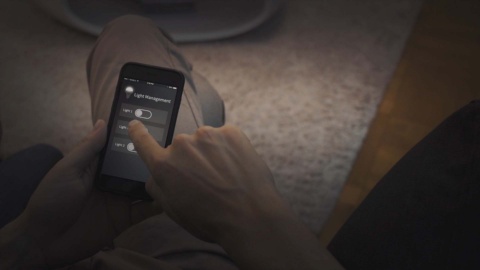
In the meantime our businessman is back at home enjoying the evening on his own couch.
He comfortably dims the living room lamps with his smartphone, again using Infineon lighting technology. With dimmable semiconductor-based LED retrofit lamps controlled by so-called drivers he can change the atmosphere to match his mood quickly and easily. Once again, none of this would be possible without semiconductors.
It will probably take a while for these modern lighting technologies to have an effect on the shrimp fisherman's evening at home in Sri Lanka. But the wheels are already in motion: LEDs continue to make headway throughout the world.
Just as the light bulb once constituted a worldwide quantum leap in technology, today new sources of light are replacing the light bulb; LEDs – Light for life.
A day full of LED technology
LED savings calculator
Have you ever thought about replacing all your lightbulbs with LED bulbs?
Not only would you save money, but you’d also be helping the environment by reducing the emission of the greenhouse gas CO2, which is the most important cause of global warming.
State the number of lightbulbs in your home below.
*15 years is the average lifespan of one LED bulb
Costs:
CO2 emission:
The calculation is based on the following assumptions:
60 watt lightbulb:
Price per bulb 1€, lifespan 1 year.
10 watt LED bulb:
Price per bulb 8€, lifespan 15 years.
The luminance of the two bulbs is nearly the same with the mentioned wattage.
Basis for the calculation are approx. about 1,000 hours of luminance per year.
One kilowatt hour (kWh) costs approximately 0.288€.(1)
The CO2-emission is around 0.559 kg per kWh.(2)
Source:
(1) Bundesverband Energie- und Wasserwirtschaft, http://strom-report.de/strompreise/#strompreise, 10.06.2015
(2) Umweltbundesamt, http://www.umweltbundesamt.de/themen/klima-energie/energieversorgung/strom-waermeversorgung-in-zahlen, 10.06.2015.
This savings calculator is based on average values and declarations of the lamp producers. Real values may deviate.
Reducing CO2 emissions

This highly modern lighting technology, which is also extremely environmentally friendly, is gradually replacing the kerosene lamps Sri Lanka's fisherman have used in the past and which are still in widespread use throughout this island nation.
And the old-fashioned lamps consume a lot of fuel: Each year the island's 85,000 inland fishermen burn an estimated 30 million liters of kerosene – enough to fill up the fuel tanks of about one hundred Airbus A380s – and emit a total of 75,000 tons of carbon dioxide into the atmosphere.
Thanks to a water-tight and inexpensive LED lamp, today the shrimp fishermen can switch to an innovative lighting technology while protecting the sensitive ecosystem from kerosene spills and reducing CO2 emissions. The lamp was developed as a part of the initiative "LED Light for You".
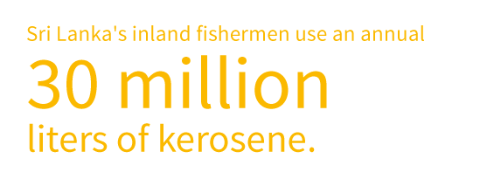
Switching to LED street lighting
In Germany power consumption for street lighting accounts for an average of almost 40 percent of overall city and municipal electricity consumption. Converting to LED street lighting can save cities and municipalities up to 80 percent on their energy costs compared to using conventional lamps.
That's why more and more German cities are recognizing the advantages of energy-efficient LED technologies and switching to LED street lighting.
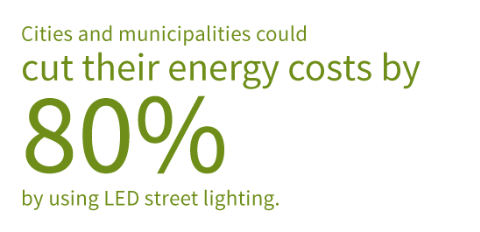
Reducing energy costs
According to the German energy efficiency agency dena, if all of Germany's office buildings were to switch to LED technologies, the resulting energy cost savings would be an annual € 500,000,000 – approximately five times the cost of the energy used in German living rooms each year for festive Christmas lighting. And this depends entirely on innovative illumination systems.
For example, cost-efficient "LED drivers" can be developed for use with, a high-voltage resonant controller for illumination systems in the 40 to 300 watt range. These drivers convert line voltage to provide the LEDs with the necessary constant direct current. They thus help to clearly reduce energy costs, especially for extensive illumination areas like industrial and warehouse premises,office buildings, streets or public areas.
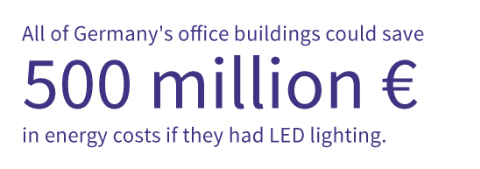
2015 - Year of Light
Promoting modern light technologies
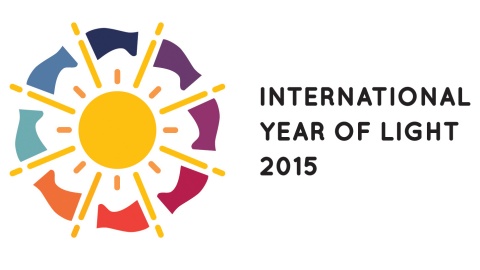
In 2015 this valuable form of energy is enjoying particular attention, especially in the media: The United Nations has declared this year to be the "International Year of Light" (IYOL). The initiative is intended to promote modern lighting technologies in order to reduce worldwide energy consumption and to raise environmental awareness. Infineon is participating as an expert for energy-efficient LED technologies and Light Management.
The UNESCO IYOL initiative will help establish LED technologies even more firmly around the world. And Infineon is the perfect partner: As experts in modern, energy-efficient LED technologies and intelligent light management, we support companies as well as private users. Our solutions help take the burden off their pocketbooks, but more than anything they help protect the environment.
More information on the UNESCO International Year of Light is available here: International Year of Light 2015 – Official Website
Electronic semiconductors ensure the optimal conversion from power to light in LEDs. Small amounts of energy suffice already - which makes LEDs one the most energy efficient lighting appliances. Depending on the matreial used LEDs can glow in different colors.
Last update: November 2016
